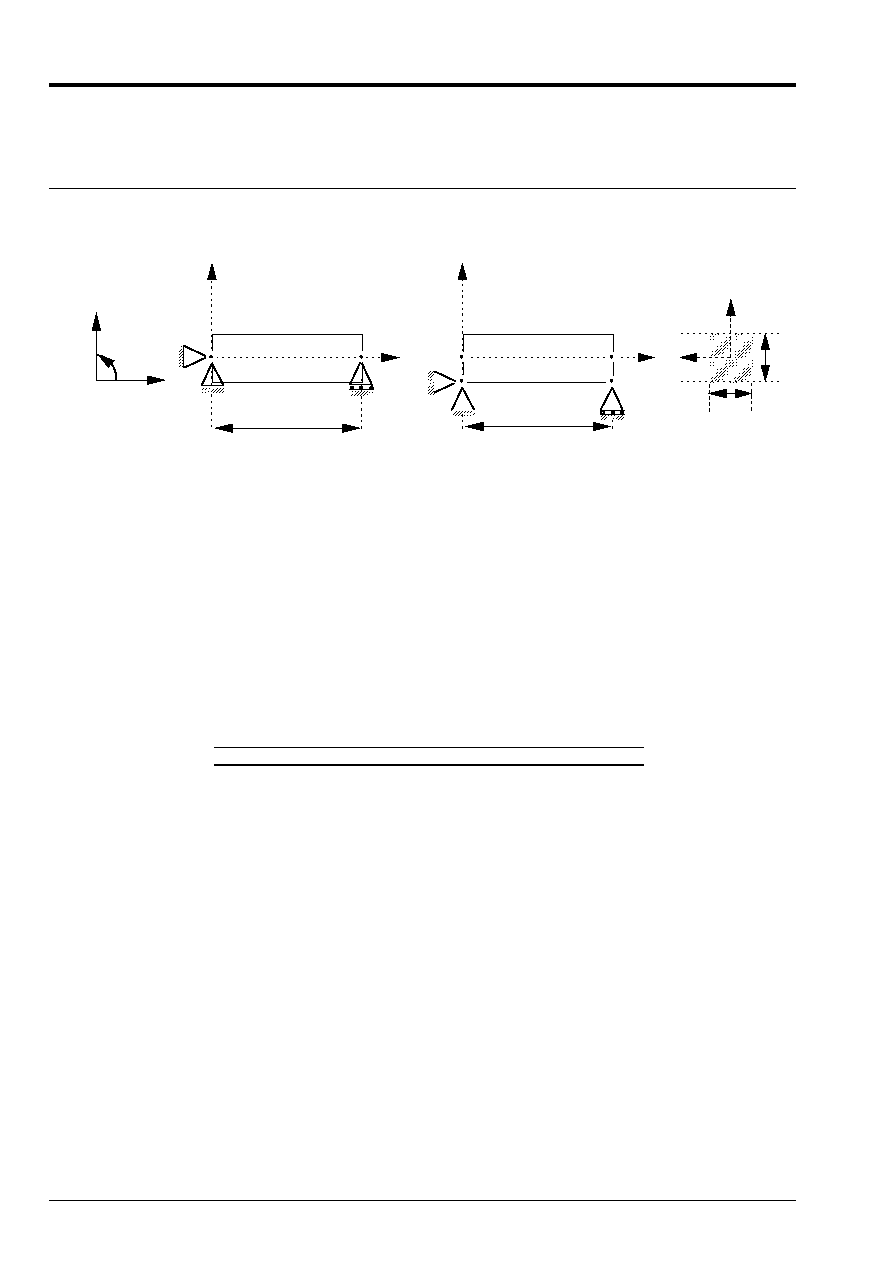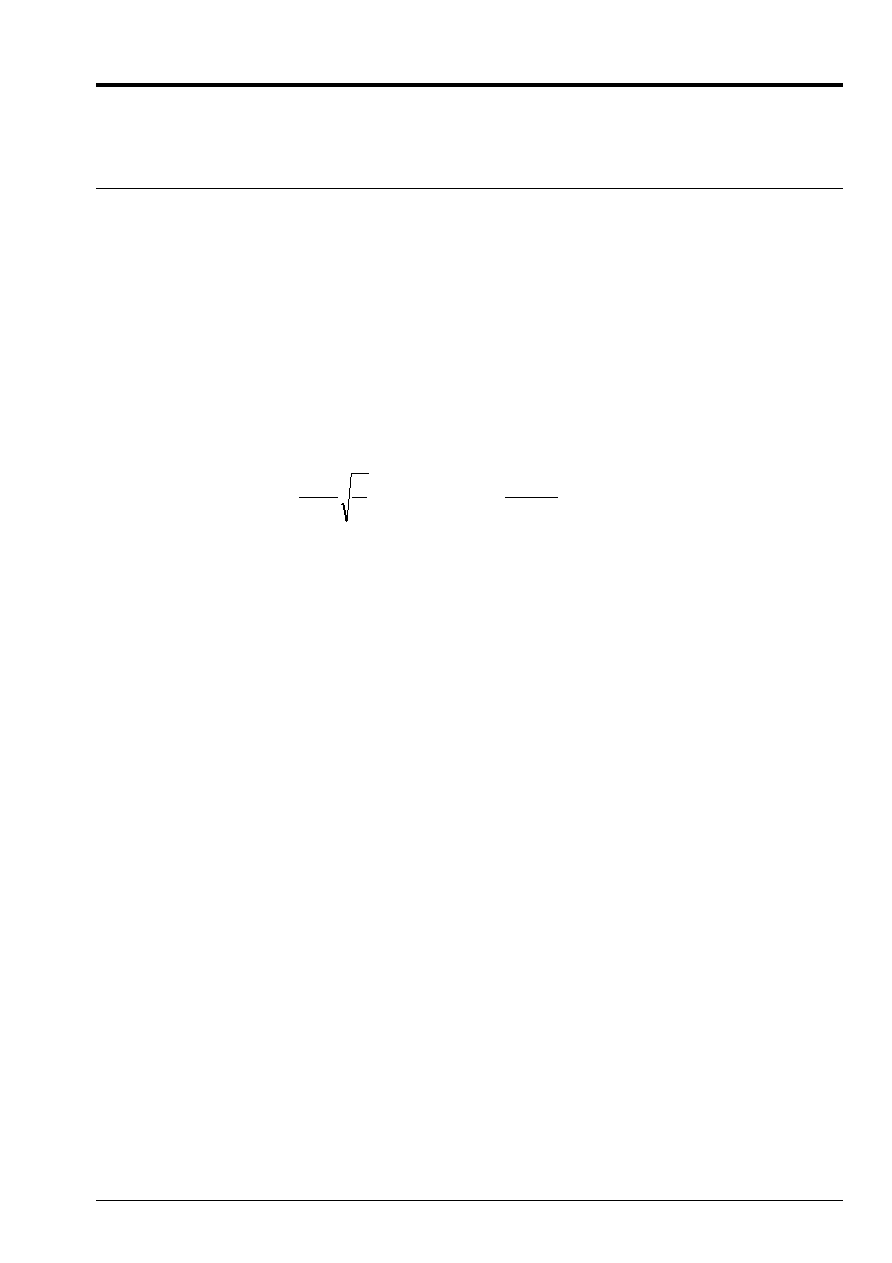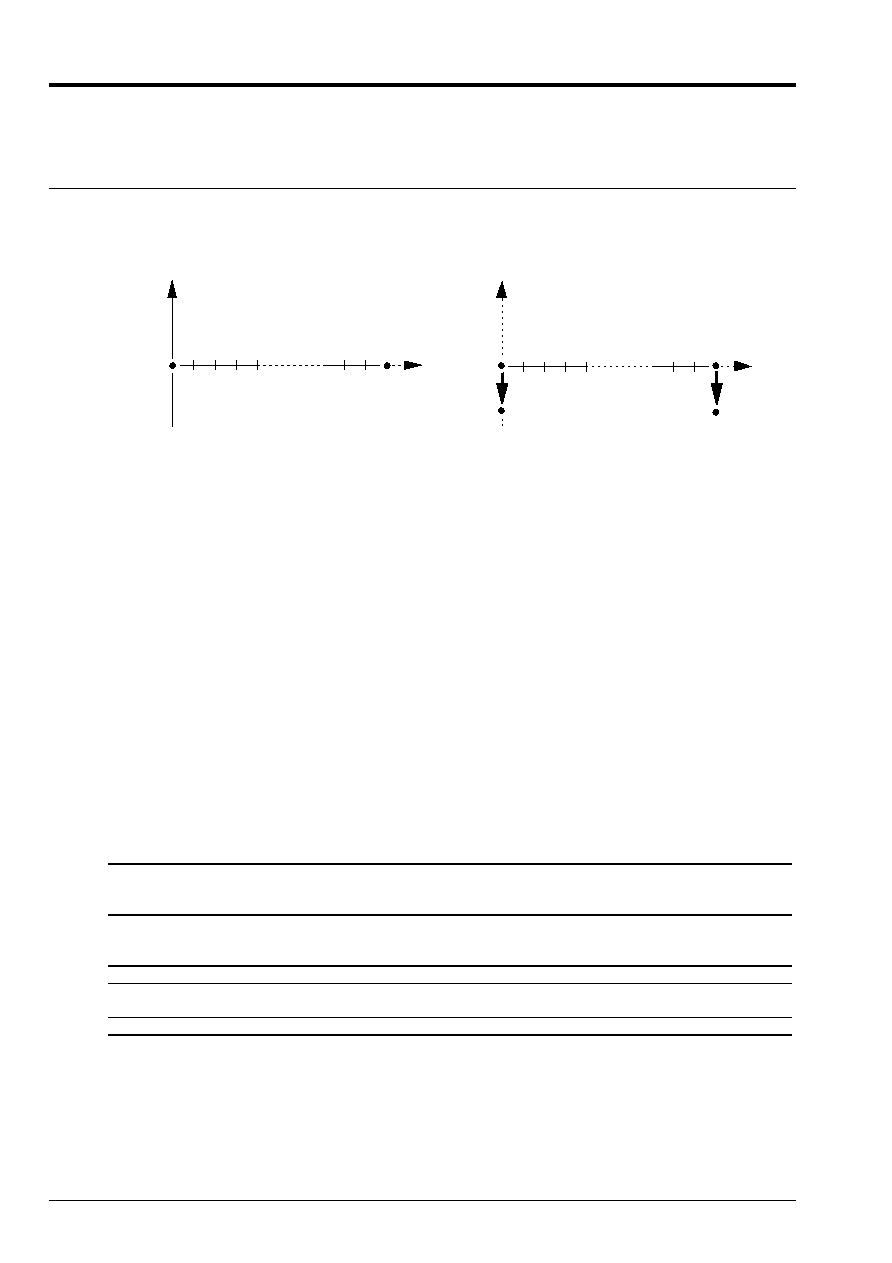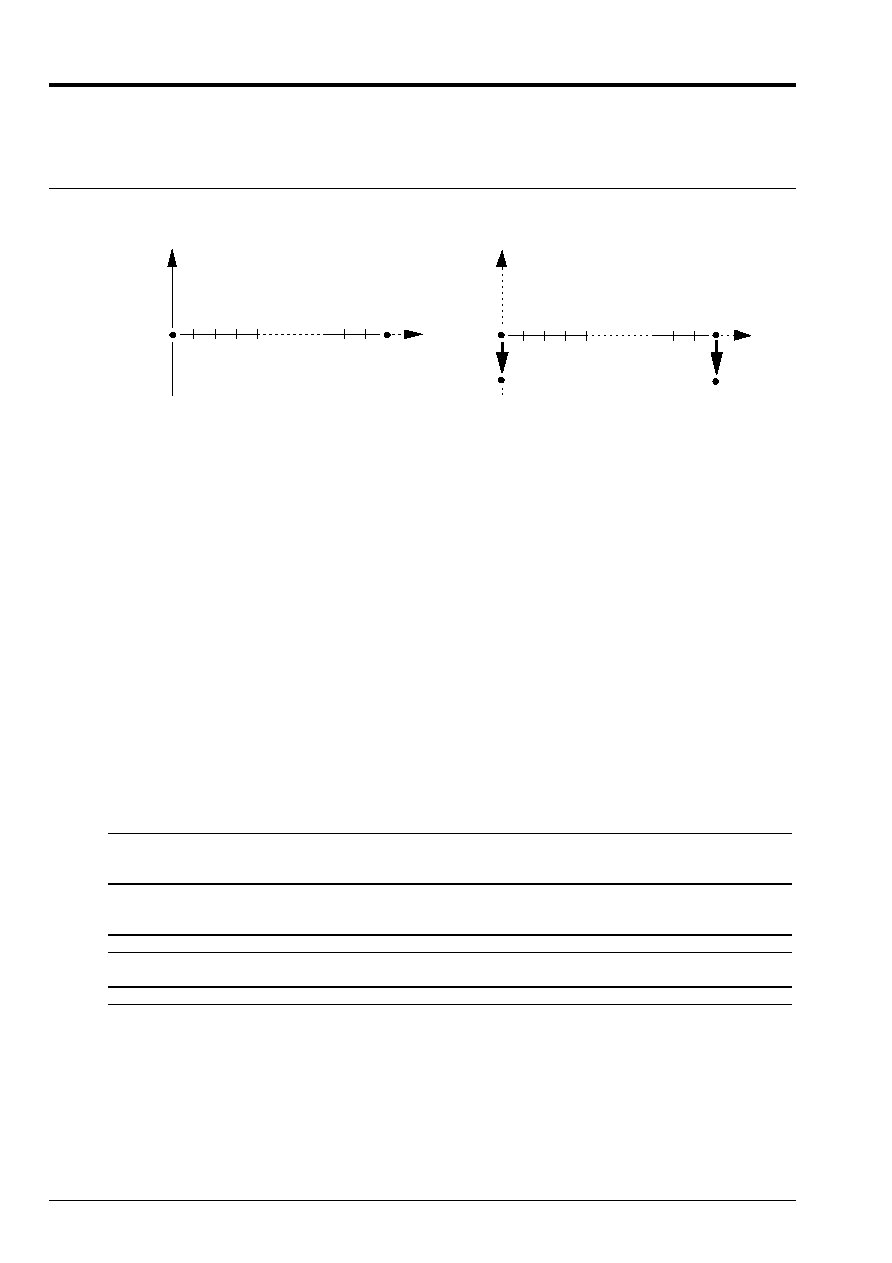
Code_Aster
®
Version
4.0
Titrate:
SDLL01 short Beam on simple supports
Date:
07/01/98
Author (S):
B. QUINNEZ
Key:
V2.02.001-C
Page:
1/8
Manual of Validation
V2.02 booklet: Linear dynamics of the beams
HI-75/96/035 - Ind A
Organization (S):
EDF/IMA/MN
Manual of Validation
V2.02 booklet: Linear dynamics of the beams
V2.02.001 document
SDLL01 - Short beam on simple supports
Summary:
This two-dimensional problem consists in seeking the frequencies of vibration of a mechanical structure
composed of a beam in simple supports at its two ends. This case test of Mechanics of the Structures
corresponds to a dynamic analysis of a linear model having a linear behavior. One studies
the influence of the position of the points considered as points of supports (points on neutral fiber or points
offset at the base of the beam) compared to neutral fiber of a thick beam.
This test which comprises only one modeling, makes it possible to test part of the functionalities which
concern the beams of Timoshenko, the connections rigid and the search for Eigen frequencies by iterations
opposite.
Results obtained, either with the points of supports on neutral fiber, or with the points of offset supports
are compared with results VPCS. In the second configuration, the reference solution is an average
results of several software packages.
When the points of supports are offset, one observes a coupling between the various modes of
traction and compression and of bending.

Code_Aster
®
Version
4.0
Titrate:
SDLL01 short Beam on simple supports
Date:
07/01/98
Author (S):
B. QUINNEZ
Key:
V2.02.001-C
Page:
2/8
Manual of Validation
V2.02 booklet: Linear dynamics of the beams
HI-75/96/035 - Ind A
1
Problem of reference
1.1 Geometry
y
Z
H
B
X, U
y
With
B
X
L
y
With
B
X
L
C
D
Rectangular cross-section:
height:
H = 0.2 m
width:
B = 0.1 m
surface:
To = 2.10
2
m
2
inertia:
lz
= 6.667 10
5
shearing:
Ay = Az = 1.17692
torsion:
Jx = 0.45776042 10
4
Length of the beam
L: 1. m
Co-ordinates of the points (m):
With
B
C
D
X
0.
1.
0.
1.
y
0.
0.
0.1
0.1
1.2
Material properties
E
= 2.10
11
AP
= 0.3
= 7.800. kg/m
3
1.3
Boundary conditions and loadings
Problem 1:
Not A
U = v = 0.
Not B
v = 0.
Problem 2:
Not C
U = v = 0.
Not D
v = 0.
1.4 Conditions
initial
Without object for the modal analysis.

Code_Aster
®
Version
4.0
Titrate:
SDLL01 short Beam on simple supports
Date:
07/01/98
Author (S):
B. QUINNEZ
Key:
V2.02.001-C
Page:
3/8
Manual of Validation
V2.02 booklet: Linear dynamics of the beams
HI-75/96/035 - Ind A
2
Reference solution
2.1
Method of calculation used for the reference solution
The reference solution is that given in card SDLL01/89 of the guide VPCS which presents
method of calculation in the following way:
Problem 1: Analytical calculation
The equation of bending of the nonslim beams gives the formulation of Timoshenko, in
superimposing the effects of the pure bending, deformations of shearing action and the inertia of
rotation.
The Eigen frequencies of reference are determined by a digital simulation of this
equation, independent of any software package.
The Eigen frequencies in traction and compression are given by:
(
)
F
L
E
I
I
I
I
I
=
=
-
=
…
2
2
1
2
1 2
with
,
Problem 2:
The problem not having an analytical solution, the solution is established by average of several
software package: model of Timoshenko with effect of the deformations of shearing action and inertia of
rotation.
The modes of bending and traction and compression are coupled.
2.2
Results of reference
Problem 1: the first 6 clean modes.
Problem 2: the first 5 clean modes.
2.3
Uncertainty on the solution
Problem 1: analytical solution.`
Problem 2: ± 0.1%
2.4 References
bibliographical
[1]
S.P. TIMOSHENKO, D.H. YOUNG, W. WEAVER. Problems vibrations in Engineering.
New York: Wiley & Sounds, 4° edition, p. 415 (1974).

Code_Aster
®
Version
4.0
Titrate:
SDLL01 short Beam on simple supports
Date:
07/01/98
Author (S):
B. QUINNEZ
Key:
V2.02.001-C
Page:
4/8
Manual of Validation
V2.02 booklet: Linear dynamics of the beams
HI-75/96/035 - Ind A
3 Modeling
With
3.1
Characteristics of modeling
One uses the element of right beam of Timoshenko:
POU_D_T
y
With
B
X
y
With
B
X
C
D
Problem 1:
Cutting:
beam AB: 40 meshs SEG2
Limiting conditions:
in all the nodes
in a:
in b:
DDL_IMPO: (GROUP_NO: AB DZ: 0., DRX:0, DRY: 0.)
(NODE: WITH DX: 0., DY: 0. )
(NODE: B DY: 0. )
Problem 2:
Cutting:
beam AB: 40 meshs SEG2
2 rigid elements AC, BC: 2 meshs SEG2
Limiting conditions:
in all the nodes
out of C:
in D:
DDL_IMPO: (ALL:“YES” DZ: 0., DRX:0, DRY: 0.)
(NODE: C DX: 0., DY: 0. )
(NODE: D DY: 0. )
Names of the nodes:
Not A = N100
Not B = N200
Not C = N300
Not D = N400
3.2
Characteristics of the mesh
A number of nodes:
43
A number of meshs and types:
42 SEG2
3.3 Functionalities
tested
Controls
Keys
AFFE_CARA_ELEM
BEAM
“GENERAL”
ALL
[U4.24.01]
GROUP_MA
“RIGHT-ANGLED”
GROUP_MA
AFFE_CHAR_MECA
DDL_IMPO
ALL
[U4.25.01]
GROUP_NO
NODE
AFFE_MATERIAU
GROUP_MA
[U4.23.02]
AFFE_MODELE
“MECHANICAL”
“POU_D_T'
ALL
[U4.22.01]
GROUP_MA
DEFI_MATERIAU
ELAS
[U4.23.01]
MODE_ITER_INV
CALC_FREQ
OPTION
“ADJUSTS”
[U5.23.01]
FREQ
3.4 Remarks
Definition of the rigid beams AC and data base:
·
Section: Hy = 0.2, Hz = 0.2.
·
Material: E = 2.10
16
,
= 0.

Code_Aster
®
Version
4.0
Titrate:
SDLL01 short Beam on simple supports
Date:
07/01/98
Author (S):
B. QUINNEZ
Key:
V2.02.001-C
Page:
5/8
Manual of Validation
V2.02 booklet: Linear dynamics of the beams
HI-75/96/035 - Ind A
4
Results of modeling A
4.1 Values
tested
Frequency (Hz)
Clean mode
Reference
Aster
% difference
Problem 1
bending 1
431.555
431.8916
0.078
traction 1
1265.924
1266.0056
0.006
bending 2
1498.295
1500.7635
0.165
bending 3
2870.661
2873.5344
0.100
traction 2
3797.773
3799.9692
0.058
bending 4
4377.837
4370.8206
0.160
Problem 2
1
392.8 ±2.7%
394.4774
0.427
coupling 2
922.2 ±5.7%
922.6072
0.044
bending 3
1592.0 ±2.9%
1638.2311
2.903
traction 4
2629.2 ±5.7%
2778.7000
5.686
compression 5
3126.2 ±4.3%
3261.6699
4.333
4.2 Remarks
Calculations carried out by:
Problem 1:
MODE_ITER_INV OPTION:LIST_FREQ “ADJUSTS”: (430. , 4500. )
Problem 2:
MODE_ITER_INV OPTION:LIST_FREQ “ADJUSTS”: (380. , 3300. )
Contents of the file results:
Problem 1:
the first 6 Eigen frequencies, clean vectors and modal parameters.
Problem 1:
the first 5 Eigen frequencies, clean vectors and modal parameters.
4.3 Parameters
of execution
Version: 3.02.21
Machine: CRAY C90
System:
UNICOS 8.0
Overall dimension memory:
8 Megawords
Time CPU To use:
9.7 seconds

Code_Aster
®
Version
4.0
Titrate:
SDLL01 short Beam on simple supports
Date:
07/01/98
Author (S):
B. QUINNEZ
Key:
V2.02.001-C
Page:
6/8
Manual of Validation
V2.02 booklet: Linear dynamics of the beams
HI-75/96/035 - Ind A
5 Modeling
B
5.1
Characteristics of modeling
POU_D_TG
y
With
B
X
y
With
B
X
C
D
Problem 1:
Cutting:
beam AB: 40 meshs SEG2
Limiting conditions:
in all the nodes
in a:
in b:
DDL_IMPO: (GROUP_NO: AB DZ: 0., DRX:0, DRY: 0.)
(NODE: WITH DX: 0., DY: 0. )
(NODE: B DY: 0. )
Problem 2:
Cutting:
beam AB: 40 meshs SEG2
2 rigid elements AC, data base: 2 meshs SEG2
Limiting conditions:
in all the nodes
out of C:
in D:
DDL_IMPO: (ALL:“YES” DZ: 0., DRX:0, DRY: 0.)
(NODE: C DX: 0., DY: 0. )
(NODE: D DY: 0. )
Names of the nodes:
Not A = N100
Not B = N200
Not C = N300
Not D = N400
5.2
Characteristics of the mesh
A number of nodes:
43
A number of meshs and types:
42 SEG2
5.3 Functionalities
tested
Controls
Keys
AFFE_CARA_ELEM
BEAM
“GENERAL”
ALL
[U4.24.01]
GROUP_MA
“RIGHT-ANGLED”
GROUP_MA
AFFE_CHAR_MECA
DDL_IMPO
ALL
[U4.25.01]
GROUP_MA
NODE
AFFE_MATERIAU
GROUP_MA
[U4.23.02]
AFFE_MODELE
“MECHANICAL”
“POU_D_TG”
ALL
[U4.22.01]
GROUP_MA
DEFI_MATERIAU
ELAS
[U4.23.01]
MODE_ITER_INV
“ADJUSTS”
[U4.52.01]
5.4 Remarks
Definition of the rigid beams AC and data base:
·
Section: Hy = 0.2, Hz = 0.2.
·
Material: E = 2.10
16
,
= 0.

Code_Aster
®
Version
4.0
Titrate:
SDLL01 short Beam on simple supports
Date:
07/01/98
Author (S):
B. QUINNEZ
Key:
V2.02.001-C
Page:
7/8
Manual of Validation
V2.02 booklet: Linear dynamics of the beams
HI-75/96/035 - Ind A
6
Results of modeling B
6.1 Values
tested
Frequency (Hz)
Clean mode
Reference
Aster
% difference
Problem 1
bending 1
431.555
431.8916
0.078
traction 1
1265.924
1266.0056
0.006
bending 2
1498.295
1500.7635
0.165
bending 3
2870.661
2873.5344
0.100
traction 2
3797.773
3799.9692
0.058
bending 4
4377.837
4370.8206
0.160
Problem 2
1
392.8 ±2.7%
394.4774
0.427
coupling 2
922.2 ±5.7%
922.6072
0.044
bending 3
1592.0 ±2.9%
1638.2311
2.903
traction 4
2629.2 ±5.7%
2778.7000
5.686
compression 5
3126.2 ±4.3%
3261.6699
4.333
6.2 Remarks
Calculations carried out by:
Problem 1:
ITERATIONS_INVERSES OPTION:LIST_FREQ “ADJUSTS”: (430. , 4500. )
Problem 2:
ITERATIONS_INVERSES OPTION:LIST_FREQ “ADJUSTS”: (380. , 3300. )
Contents of the file results:
Problem 1:
the first 6 Eigen frequencies, clean vectors and modal parameters.
Problem 1:
the first 5 Eigen frequencies, clean vectors and modal parameters.
6.3 Parameters
of execution
Version: 3.06
Machine: CRAY C90
System:
UNICOS 8.0
Overall dimension memory:
8 Megawords
Time CPU To use:
1.1875E+1 seconds

Code_Aster
®
Version
4.0
Titrate:
SDLL01 short Beam on simple supports
Date:
07/01/98
Author (S):
B. QUINNEZ
Key:
V2.02.001-C
Page:
8/8
Manual of Validation
V2.02 booklet: Linear dynamics of the beams
HI-75/96/035 - Ind A
7
Summary of the results
The problem without eccentricity is correctly dealt with.
With eccentricity, the problem is dealt with with a dispersion from 3 to 6% by various software packages.
Aster
remain in this fork.







